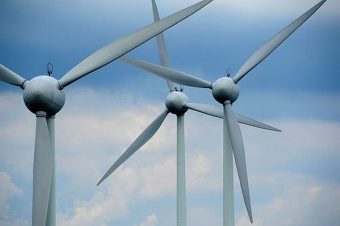
The US Energy Information Administration has this week predicted that electricity generated from wind energy will surpass that from hydroelectricity, the previously-dominant renewable energy source in the US.
According to the latest Short-Term Energy Outlook published this week by the Energy Information Administration (EIA), this is due to a lack of new hydro plants coming online in the next two years plus continued wind installations. Specifically, the EIA explains that increases in hydroelectric generation in 2018 and 2019 will largely rely on precipitation and water runoff, and although weather patterns will also affect wind electricity generation, the EIA’s forecast for wind is more dependent on the capacity and timing of new wind farms coming online.
Both technologies will follow natural seasonal patterns — hydropower will peak in spring when precipitation and snowpack melt increases water runoff, while wind energy will peak in spring and fall. For hydropower specifically, the EIA expects hydropower generation to be down slightly in 2018 and 2019 after a relatively wet 2017. In 2017, hydropower provided 7.4% of total utility-scale generation, but that figure will drop in 2018 to 6.5%, and 6.6% in 2019.
Conversely, the EIA expects continued new wind capacity to come online during 2018 and 2019, with 8.3 GW (gigawatts) added in 2018 and 8 GW added in 2019, which will increase wind’s contribution to the utility-scale energy mix by 9% by the end of 2018 and by 8% by the end of 2019. In the end, the EIA expects wind to account for 6.4% of total utility-scale generation in 2018, and 6.9% in 2019, the point at which it exceeds hydropower.
Source: cleantechnica.com



